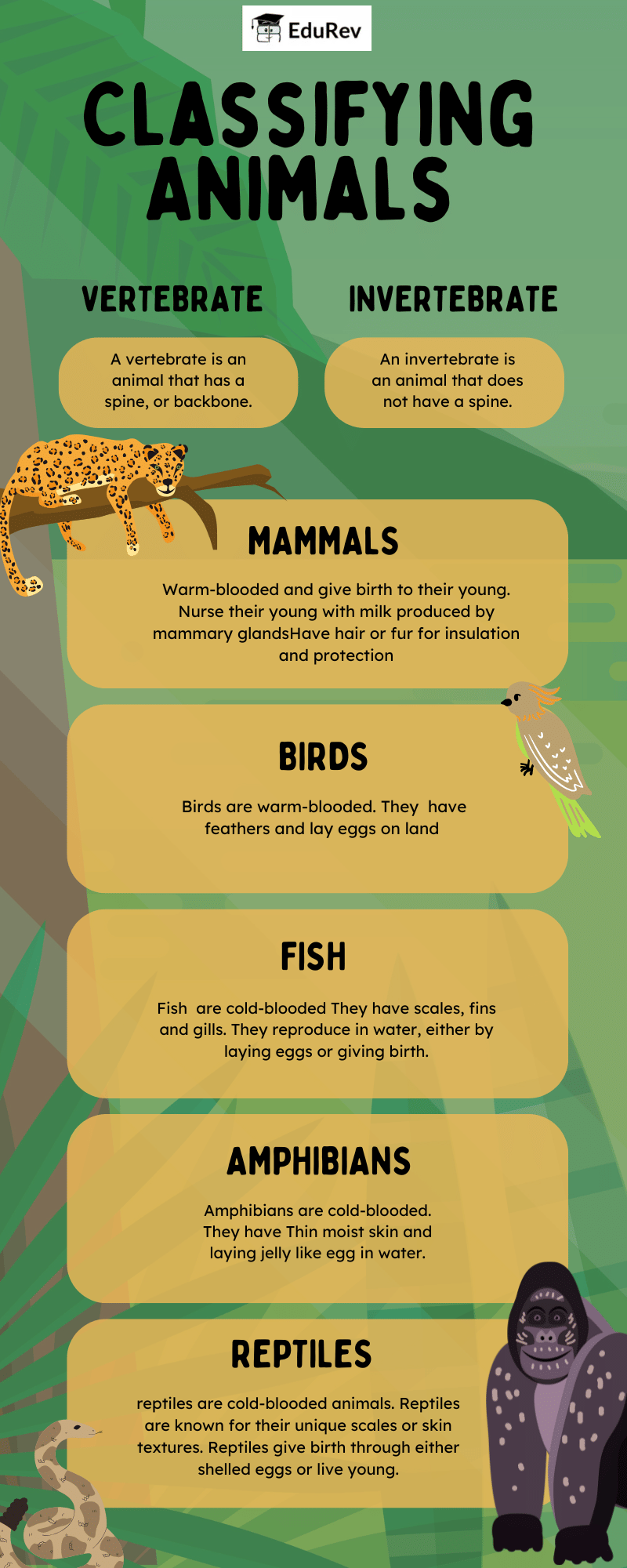Class 3 Exam > Class 3 Notes > Science for Class 3 > Infographics: Animal: Feeding Habits
Infographics: Animal: Feeding Habits | Science for Class 3 PDF Download

The document Infographics: Animal: Feeding Habits | Science for Class 3 is a part of the Class 3 Course Science for Class 3.
All you need of Class 3 at this link: Class 3
|
20 videos|121 docs|32 tests
|
FAQs on Infographics: Animal: Feeding Habits - Science for Class 3
| 1. What are the different types of feeding habits in animals? |  |
Ans.Animals can be categorized into several feeding habits, including herbivores (plant-eaters), carnivores (meat-eaters), omnivores (both plant and meat-eaters), and detritivores (organisms that feed on decomposing organic matter). Each group has adapted specific structures and behaviors to obtain and process their food efficiently.
| 2. How do herbivores obtain their food? |  |
Ans.Herbivores obtain their food by grazing or browsing on plants, leaves, fruits, and vegetables. They have specialized teeth for grinding and chewing plant material, and their digestive systems often include adaptations like longer intestines or specialized stomachs to break down tough plant fibers.
| 3. What adaptations do carnivores have for feeding? |  |
Ans.Carnivores have various adaptations for feeding, including sharp teeth and claws for capturing and tearing flesh, keen senses for hunting, and digestive systems that can quickly process protein-rich diets. Some carnivores, like wolves, may also hunt in packs to increase their chances of capturing prey.
| 4. Can you explain the feeding habits of omnivores? |  |
Ans.Omnivores, like humans and bears, have a versatile diet that includes both plant and animal sources. They have teeth that are adapted for both grinding plants and tearing meat. This adaptability allows them to thrive in various environments and take advantage of a wide range of food resources.
| 5. Why are feeding habits important for animal survival? |  |
Ans.Feeding habits are crucial for animal survival because they determine how an animal acquires energy and nutrients needed for growth, reproduction, and daily activities. The availability of food resources, along with an animal's feeding strategy, directly influences its population dynamics, habitat selection, and ecological interactions within its environment.
Related Searches





















